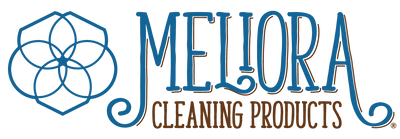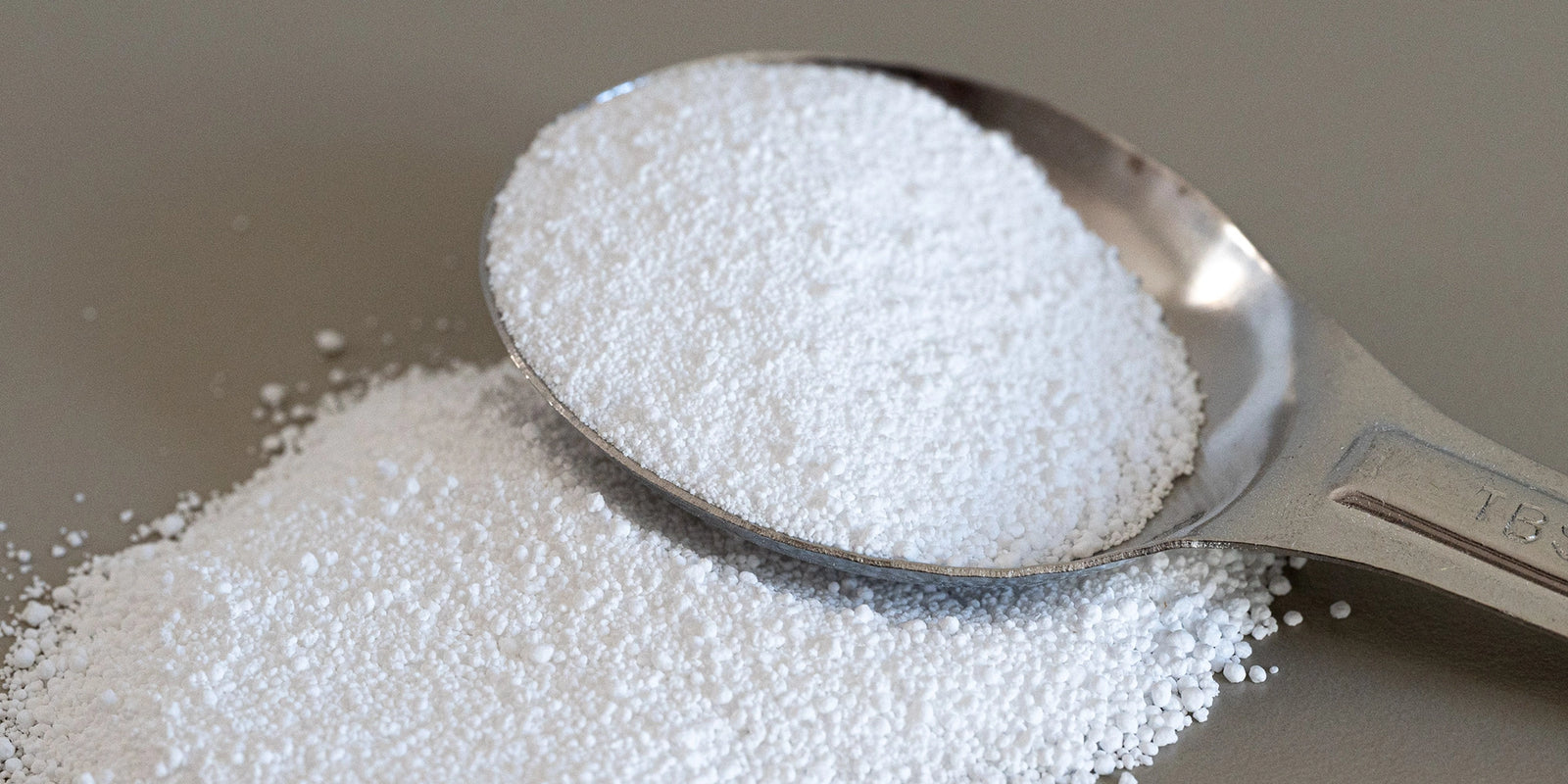Ingredients are the cornerstone of our products and our business. We strive to use ingredients and formulas that are safer for people and the environment. We consider the entire ingredient lifecycle, from sourcing and manufacturing to use and disposal. Third-party certifications from MADE SAFE® and Leaping Bunny hold us accountable and help us identify ingredients that align with our standards. We list every ingredient we use on the label of each product and on our website.
Our Meet Your Ingredient series is our effort to provide additional information about our products so you can make informed decisions. This entry is all about sodium percarbonate, which we use to make our Oxygen Brightener bleach alternative.
What is sodium percarbonate?
Sodium percarbonate, also known as sodium carbonate peroxide, is a white, crystalline, water-soluble solid. It is commonly used in laundry and cleaning products as a bleach alternative. Sodium percarbonate is an oxidizing agent that breaks down dirt and stains.
How is sodium percarbonate made?
Sodium percarbonate is made from a reaction of hydrogen peroxide and sodium carbonate (which is also known as washing soda or soda ash).
Hydrogen peroxide is a naturally occurring chemical found in the atmosphere and in surface and groundwater. Humans and other animals also produce it as part of their natural processes. Most hydrogen peroxide is manufactured through chemical processes.
Sodium carbonate is derived from naturally occurring trona ore. In the United States, most trona ore is mined in Wyoming and Colorado.
What is sodium percarbonate used for?
Sodium percarbonate is an oxidizer. When added to water, it helps break up organic compounds like dirt and oil. It’s a sustainable, eco-friendly bleach alternative with a variety of household uses, including removing stains, deodorizing, and whitening.
At Meliora Cleaning Products, we use sodium percarbonate to make our Oxygen Brightener, an all-in-one bleach alternative, laundry booster, and oxygen cleaner.
Health impact of sodium percarbonate
Sodium percarbonate is used in cleaning products as a safer alternative to chlorine bleach, which poses numerous human health concerns. Bleach is a strong irritant that can cause severe skin burns and eye damage. When mixed with other chemicals, it can produce toxic chlorine gas. It can also react with other chemicals and organic matter to create additional toxicants including volatile organic compounds (VOCs) and dioxins. These byproducts have been linked to cancer, reproductive issues, and hormone disruption.
Sodium percarbonate is also an irritant that should be handled with care. However, it is widely considered to be safer than bleach because it does not produce toxic gas or byproducts when exposed to other substances. It has an “A” grade in the EWG Guide to Healthy Cleaning, which notes “low” to “some” concern for eye, skin, and respiratory irritation. In cases of direct contact with eyes, sodium percarbonate can be flushed out with water. Skin contact can be washed away with regular soap and water.
Unlike chlorine bleach, sodium percarbonate is approved by MADE SAFE®, a human health and ecosystem-focused certification for household products.
Environmental impact of sodium percarbonate
Sodium percarbonate is considered safe for ecosystems and the environment, with minimal adverse effects. When mixed with water, sodium percarbonate breaks down into sodium carbonate and hydrogen peroxide. The hydrogen peroxide then oxidizes the dirt and stains it comes into contact with and further breaks down into water and oxygen. Any remaining hydrogen peroxide and sodium carbonate will degrade in wastewater treatment plants.
The EWG Guide to Healthy Cleaning does not report any environmental health concerns related to sodium percarbonate. In comparison, chlorine bleach is considered “very toxic to aquatic life” and may cause long-term effects in aquatic ecosystems.
|
Sodium Percarbonate |
|
Also known as: Sodium Carbonate Peroxide INCI Name: Sodium Carbonate Peroxide CAS Number: 15630-89-4 Products with Sodium Percarbonate: |

